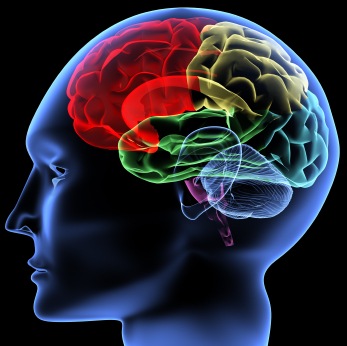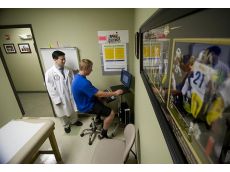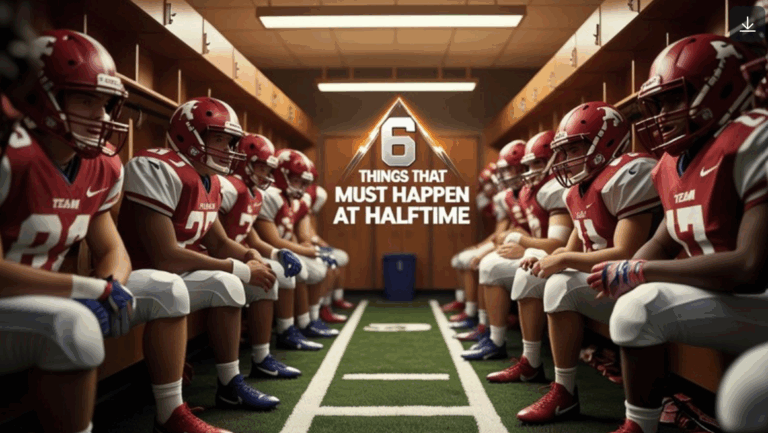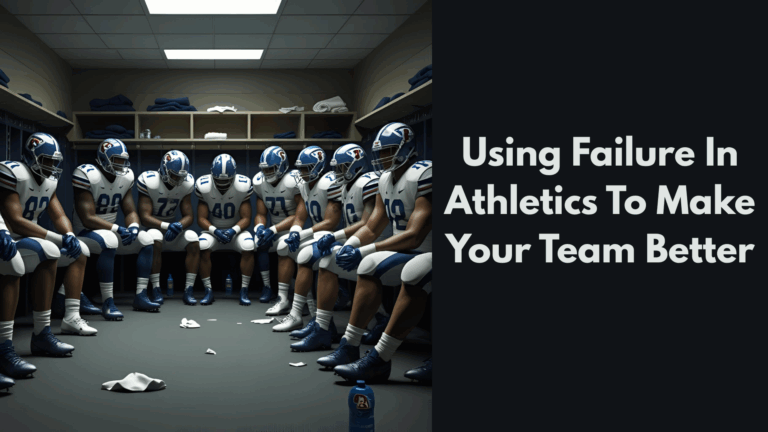
Source: www.youthsportsny.org
I took over as the Athletic Director at Excelsior Charter Schools in Victorville, California on May 29, 2012. I was in the office of the main school building for not more than 5 minutes, waiting to meet with the Principal when our Superintendent saw me sitting there. He came over, and welcomed me to the school as we exchanged pleasantries. Not two minutes in to that conversation he said “Here is your first task from me: I need you to develop an athletic department concussion policy.” Then he shared with me a few reasons why that was at the top of his list for me, the new AD.

So, I wrote that down on my Iphone to do list, and waited for the principal. Later that day, I started gathering facts, making phone calls, and working on developing our Concussion Management Policy. I used a variety of sources to put together this policy. One of my main sources was the ImPact website. Through my research on this website, I found out that there was a doctor in our very own community, not even a mile from my office desk, who was trained by Dr. Mark Lovell. Dr. Lovell is one of the creators of the ImPact test as well as one of the most knowledgeable doctors regarding concussions. In fact, Dr. Lovell is the NFL’s director of neuropsychological testing. This doctor in our community is Dr. Thomas Liu. I was able to sit down with him for about an hour to learn more about the proper care of concussions. He was a great source for me in putting together this policy. He looked it over himself, and made some suggestions. Our kids are all getting ImPact baseline tested for football in a few weeks by Dr. Liu.

Below is what I’ve developed for our Concussion Management Policy. (I have replaced our school’s name with ABC School for this document.)
“ABC SCHOOL” ATHLETIC DEPARTMENT
CONCUSSION MANAGEMENT POLICY
By Athletic Director Chris Fore, Certified Athletic Administrator
The Purpose of a School Concussion Management Policy
The purpose of the “ABC School” Concussion Management Policy is first and foremost to protect both the short and long term health of our Student-Athletes. Secondary to goal is to be compliant with local and state law. Lastly, we have instituted a Concussion Management Policy so that we can educate our Student-Athletes, their parents, Coaching Staff, our Faculty and Staff, etc. about the dangers of concussions.
Maintaining a Concussion Management Policy will help our Athletic Department in the following ways:
• Maintain Safety – This policy will help to create a “safety first” response to concussions.
• Supports Best Practice – This policy uses nationally known and approved best practices
• Consistency – all coaches, Varsity and Junior Varsity, heads and assistants, volunteer and paid will follow this same protocol
• Protest the Student-Athlete – Return To Play protocol
The California Interscholastic Federation is the body which governs high school athletics in California. CIF Bylaw 313 (Play It Safer) states: “A student-athlete who is suspected of sustaining a concussion or head injury in a practice or game shall be removed from competition at that time for the remainder of the day. A student-athlete who has been removed from play may not return to play until the athlete is evaluated by a licensed health care provider trained in the evaluation and management of concussion and receives written clearance to return to play form that health care provider.”
What is a Concussion?
A concussion (or mild traumatic brain injury mTBI) is a complex pathophysiologic process affecting the brain, induced by trauma (direct or indirect forces to the head). Disturbance of brain function is related to neurometabolic dysfunction, rather than structural injury. Concussion may or may not involve a loss of consciousness (LOC). Concussion results in a constellation of physical, cognitive, emotional, and sleep-related symptoms. Symptoms may last from several minutes to days, weeks, months or even longer in some cases. In the end, a concussion is “An energy crisis for the brain.” SOURCE: ImPACT Seminar; Development of a Concussion Management Policy
WHAT ARE THE SYMPTOMS OF A CONCUSSION
You can’t see a concussion, but you might notice some of the symptoms right away. Other symptoms can show up hours or days after the injury. Concussion symptoms include:
Amnesia Confusion
Headache Loss of consciousness
Balance problems or dizziness Double or fuzzy vision
Sensitivity to light or noise Nausea (A feeling that you might vomit)
Don’t feel right Feeling sluggish, foggy or groggy
Feeling unusually irritable Slowed reaction time
Concentration or memory problems (forgetting game plays, facts, meeting times)
Exercise or activities that involve a lot of concentration, such as studying, working on the computer, or playing video games may cause concussion symptoms (such as headache or tiredness) to reappear or get worse.
WHAT TO DO WHEN A COACH SUSPECTS A CONCUSSION
1. Remove the athlete from play. Look for signs and symptoms of a concussion if your athlete has experienced a bump or blow to the head or body. When in doubt, keep the athlete out of play.
2. Ensure that the athlete is evaluated by a health care professional experienced in evaluating for concussion. Do not try to judge the severity of the injury yourself. Health care professionals have a number of methods that they can use to assess the severity of concussions.
Coaches are responsible for documenting a suspected concussion. To do this, a member of the coaching staff (If an Athletic Trainer, Doctor, or health care professional is not present) must record the following information, which can help health care professionals in assessing the athlete after the injury:
- Name and age of Student-Athlete
- Date, time, location and sport being played at time of suspected concussion
- Cause of the injury and force of the hit or blow to the head or body?
- Any loss of consciousness (passed out/knocked out) and if so, for how long?
- Any memory loss immediately following the injury?
- Any seizures immediately following the injury?
- Number of previous concussions (if known)?
This documentation needs to be submitted to the Athletic Director on the CONCUSSION REPORT FORM within 24 hours of the suspected concussion. (See attached form at the end of this Policy.)
3. Inform the athlete’s parents or guardians about the possible concussion and refer them to the fact sheet on concussions at www.abcschool.com. This form should also be passed out the preseason parent meeting. Make sure they know that the athlete should be seen by a health care professional experienced in evaluating for concussion.
If possible, we would like for our athletes to be seen by Dr. Thomas Liu at the Southern California Bone and Joint Clinic. Dr. Liu has significant concussion training with Drs. Lovell and Collins who wrote the new NFL guidelines on concussions. Dr. Liu’s phone number is XXX-XXX-XXXX. His office is less than 2 minutes away from our campus.
Student-Athletes who are suspected to have sustained a concussion should not drive themselves home from practice or a contest.
4. Keep the athlete out of play the day of the injury and until a health care professional, experienced in evaluating for concussion, says they are symptom-free and it’s OK to return to play. A repeat concussion that occurs before the brain recovers from the first—usually within a short period of time (hours, days, or weeks)—can slow recovery or increase the likelihood of having long-term problems. In rare cases, repeat concussions can result in edema (brain swelling), permanent brain damage, and even death.
A Student-Athlete may not return to play, whether that is practice or a game, jogging as a warm up, or playing full contact until he or she is cleared to return to play by a licensed health care provider. That clearance needs to be in the form of a written document from the health care provider. A copy of that documentation needs to be given to both the Head Coach and the Athletic Director.
SUGGESTED PROGRESSIVE RETURN TO PLAY GUIDELINES
• Stage 1 – THROUGH 30-40% – No impact activities
• Stage 2 – THROUGH 40-60% – Some positional changes
• Stage 3 – THROUGH 60-80% – Strength, balance, concentration
• Stage 4 – THROUGH 80% – Aggressive training, avoiding contact
• Stage 5 – Full participation
WHAT CAN HAPPEN IF A STUDENT-ATHLETE RETURNS TO PLAY TOO SOON
Athletes with the signs and symptoms of concussion should be removed from play immediately (CIF Bylaw 313). Continuing to play with the signs and symptoms of a concussion leaves the athlete especially vulnerable to greater injury. There is an increased risk of significant damage from a concussion for a period of time after that concussion occurs, particularly if the athlete suffers another concussion before completely recovering from the first one. This can lead to prolonged recovery, or even to severe brain swelling (second impact syndrome) with devastating and even fatal consequences. It is well known that adolescent or teenage athlete will often under report symptoms of injuries and concussions are no different. It is the duty of the coach to place the health and safety of your Student-Athletes ahead of winning.
THE EDUCATION OF COACHES, STUDENT-ATHLETES AND THEIR PARENTS
As part of following best practices and guidelines, it is important to educate all constituents of the Athletic Department.
All members of the “ABC School” Coaching Staff must watch the National Federation of High School’s Concussion in Sports, What You Need To Know video to prepare for the 2012-13 school year. They must present the Athletic Director with their certificate of completion once they have watched this video. Coaches must also read the Concussion Information Sheet which all Student-Athletes and their parents/guardians must read and sign.
All Student-Athletes and their parents/guardians must read, sign and turn in the “ABC School” Concussion Information Sheet. This document is a part of the 2012-13 Athletic Packet. Student-Athletes are not eligible to begin participation in athletics until this document is read and accounted for via the Blue Sheet.
Our Concussion Management Policy as well as the Concussion Fact Sheet will be available for all Student-Athletes and their parents/guardians, as well as our faculty and staff on the schools’ website at www.abcschool.com.
ACADEMIC ACCOMODATIONS
There are times when a Student-Athlete must have some accommodations made to him or her by school officials. These accommodations are at the discretion of the principal and or facilitator.
Why might a Student-Athlete need special accommodation after having sustained a concussion? There are two reasons a Student-Athlete may need special accommodations. Number one, this allows the brain to return to normal. And number two, it will help to minimize the anxiety level of the Student-Athlete.
Facilitators are one of the best sources for helping to determine what special academic accommodations may be needed for the Student-Athletes. They are experts in observing the student’s “normal” social and academic behavior.
Any special accommodations must be communicated to the Student-Athlete and their parents/guardians, along with the Athletic Director and Principal.
“ABC SCHOOL” ATHLETIC DEPARTMENT
CONCUSSION MANAGEMENT POLICY
CONCUSSION REPORT FORM
NAME OF STUDENT-ATHLETE: AGE:
DATE: TIME: SPORT:
LOCATION OF INJURY:
CAUSE OF THE INJURY: (Be as specific as possible. Was it a blow to the head? A blow to the body that then caused a blow to the head?)
ANY LOSS OF CONSCIOUSNESS? (Circle one) Yes No If so, how long was Student-Athlete unconscious?
ANY SHORT-TERM MEMORY LOSS IMMEDIATELY FOLLOWING THE INJURY?
ANY SEIZURES IMMEDIATELY FOLLOWING THE INJURY?
NUMBER OF PREVIOUS CONCUSSIONS (IF KNOWN?)


